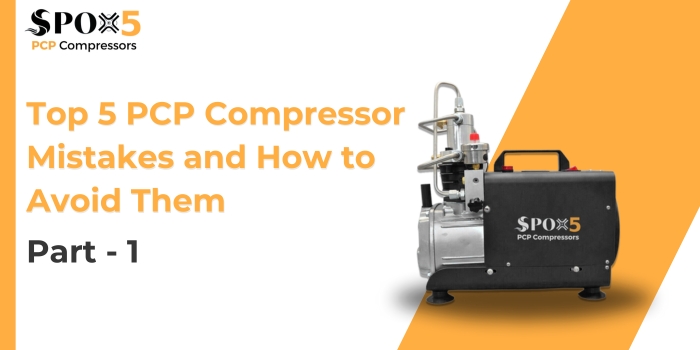PCP (progressing cavity) compressors are the workhorses of the compressed air world, powering everything from air rifles to industrial applications. But like any powerful tool, they require proper handling to ensure safety, efficiency, and longevity. Here, we explore the top 5 common mistakes with PCP compressors and provide solutions to keep your air source running smoothly.
Mistake #1: Ignoring the Manual
The Problem: Every PCP compressor model has its own specific capabilities and limitations outlined in the user manual. Ignoring these guidelines can lead to a world of trouble.
The Consequences: Skipping the manual can result in:
- Reduced Efficiency: Operating outside the recommended pressure range or using the wrong settings can strain the compressor and decrease its overall efficiency.
- Premature Wear and Tear: Pushing the compressor beyond its limits can accelerate wear on internal components, shortening its lifespan.
- Safety Hazards: Operating with improper procedures or exceeding pressure limits can increase the risk of accidents and injuries.
The Solution: Make the user manual your best friend. Familiarize yourself with:
- Recommended Pressure Range: Each model has a specific pressure range it’s designed to handle. Always operate within these limits.
- Compatible Fluids: The manual will specify the types of fluids the compressor can handle safely. Using incompatible fluids can damage internal components.
- Maintenance Schedule: The manufacturer recommends a specific maintenance schedule for oil changes, filter replacements, and inspections. Regular maintenance ensures optimal performance and longevity.
Mistake #2: Neglecting System Design
Il problema: Concentrarsi solo sul compressore in sé, trascurando l'intero progetto del sistema, può portare a problemi di prestazioni.
The Consequences: A poorly designed system can put undue stress on your PCP compressor and hinder its ability to perform efficiently:
- Improper Pipe Sizing: Undersized pipes create excessive back pressure, reducing the compressor’s effective PSI output and potentially leading to overheating.
- Filtrazione inadeguata: Il mancato utilizzo di filtri adeguati a monte del compressore può consentire l'ingresso di contaminanti nel sistema, causando danni ai componenti interni.
- Ignorare la contropressione del sistema: Ignorare o non gestire la contropressione delle apparecchiature a valle può ridurre la capacità del compressore di erogare la portata desiderata.
La soluzione: Quando si progetta un sistema di compressori PCP, bisogna considerare tutti gli aspetti della progettazione:
- Dimensionamento dei tubi: Consultare un ingegnere qualificato per determinare il diametro del tubo appropriato in base alla portata e alla perdita di carico richieste.
- Filtrazione: Installare filtri appropriati all'ingresso del compressore per rimuovere eventuali contaminanti dall'aria o dal gas in ingresso.
- Gestione della contropressione: Identificare le potenziali fonti di contropressione a valle e attuare strategie per ridurla al minimo, come l'utilizzo di tubi di diametro maggiore o l'installazione di valvole di sicurezza.
Stay tuned for Parts 2 & 3 of this blog series, where we’ll explore additional mistakes to avoid and delve into proper maintenance practices for your SPOX5 PCP compressor!

